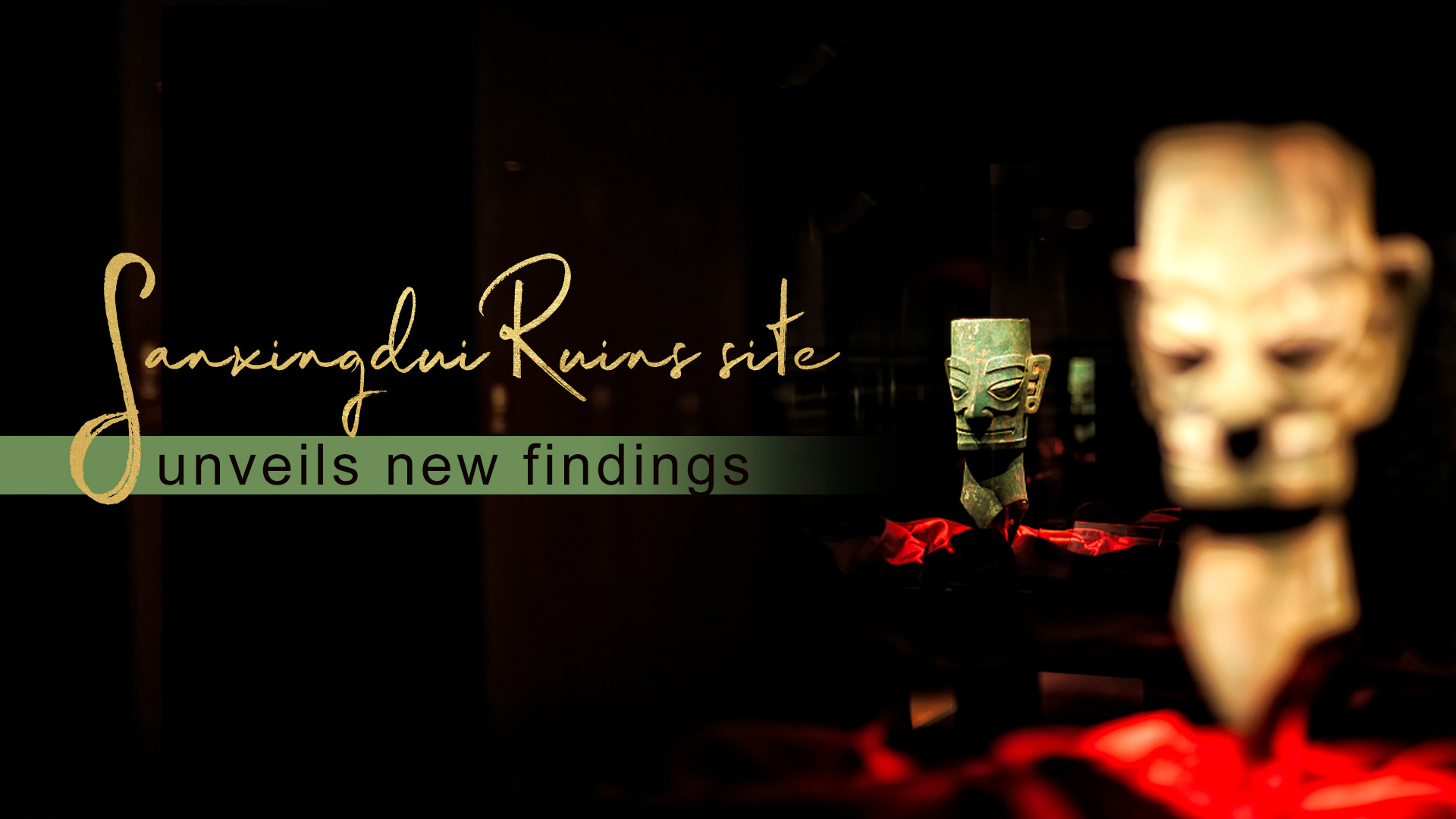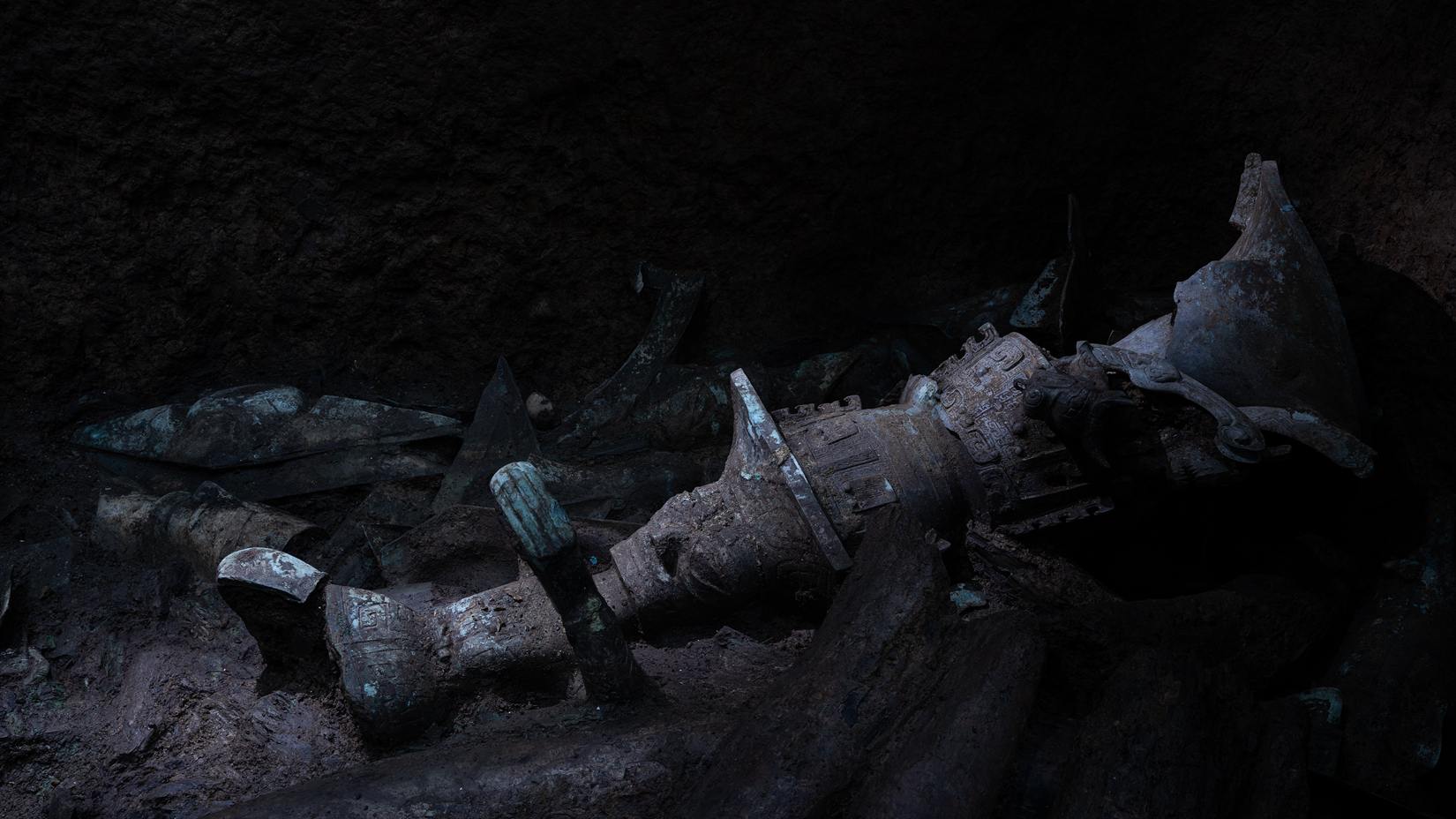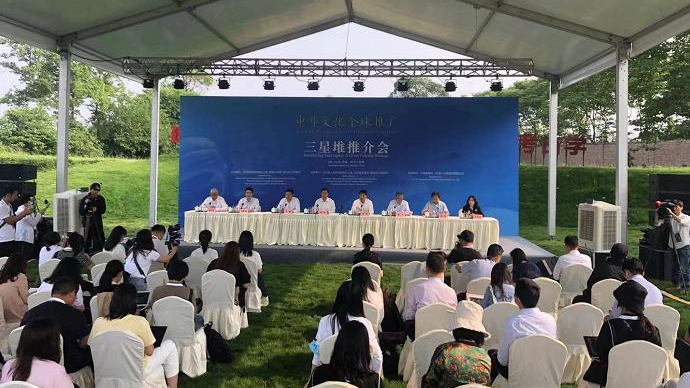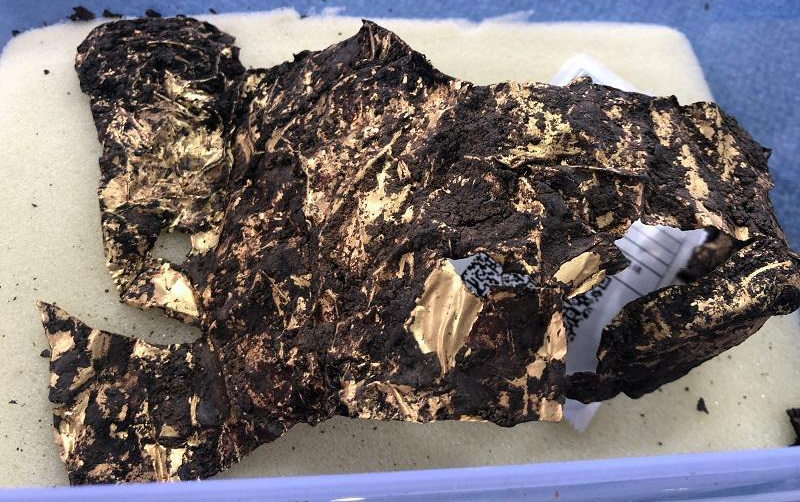00:47

Chinese archaeologists on Friday unveiled major new findings, including an unprecedented bronze figure holding a zun (cylindrical drinking vessel), during the excavations at the legendary Sanxingdui Ruins site over the past months.
A total of 534 cultural relics, such as ivory, bronze, gold and jade items, as well as more than 2,000 pieces of broken artifacts, have been unearthed so far at six new sacrificial pits unveiled earlier in March, the National Cultural Heritage Administration announced at a press conference in Guanghan, southwest China's Sichuan Province.
In the No.3 pit, a 1.15-meter tall bronze figure holding a zun (ancient Chinese drinking vessel) over head was unearthed under massive ivory objects.

A 1.15-meter tall bronze figure holding a zun (ancient Chinese drinking vessel) over head is unearthed under massive ivory objects in the No.3 pit at the Sanxingdui Ruins site in Guanghan, southwest China's Sichuan Province. /CMG
A 1.15-meter tall bronze figure holding a zun (ancient Chinese drinking vessel) over head is unearthed under massive ivory objects in the No.3 pit at the Sanxingdui Ruins site in Guanghan, southwest China's Sichuan Province. /CMG
The huge bronze sculpture comprising of a figure and a zun vessel is the first of its kind ever found at home and in the world.
The excavation work of the ivory carvings in the No.3 and No.4 sacrificial pits has been basically completed, and more of the bronze wares that have been found will be removed from the pits.
According to the archaeologists, the No.5 sacrificial pit is special as numerous round gold foils scattered in the pit. Experts decided to carry out on-site laboratory archaeological research at some parts of the pit.

Chinese archaeologists on Friday unveiled major new findings during the excavations at the legendary Sanxingdui Ruins site over the past months at a press conference in Guanghan, southwest China's Sichuan Province, May 28, 2021. /CMG
Chinese archaeologists on Friday unveiled major new findings during the excavations at the legendary Sanxingdui Ruins site over the past months at a press conference in Guanghan, southwest China's Sichuan Province, May 28, 2021. /CMG
A "wooden box" was found in the No.6 pit earlier and now is ready for the archaeological excavation, while at the bottom of the No.7 pit a large number of ivory objects were discovered.
At the No.8 pit, some pieces of sacred trees, gold ware and bronze masks were found in a 20-centimeter ash layer.
In the same pit, archaeologists also discovered the remains of a gold mask, on which the patterns of the ears and mouth are clearly visible.

Remains of a gold mask unearthed at the No.8 sacrificial pit at the legendary Sanxingdui Ruins site in Guanghan, southwest China's Sichuan Province. /CMG
Remains of a gold mask unearthed at the No.8 sacrificial pit at the legendary Sanxingdui Ruins site in Guanghan, southwest China's Sichuan Province. /CMG
"This is indeed spectacular, and of high archaeological and high scientific significance, not only to the history and archaeology of China, but also to the rest of the world. The meticulous work going on to provide details and interpretation to of the spectacular discoveries of this century is indeed commendable," said Webber Ndoro, Director General, International Center for the Study of the Preservation and Restoration of Cultural Property in a congratulatory video.
Among a large number of heritage sites and cultural relics across China, the Sanxingdui Ruins site is considered one of the most important ancient remains in the world for its vast size, age and rich cultural content.
Chinese archaeologists have discovered eight major sacrificial pits, including six new sacrificial pits unveiled on March 20, which contain a wide range of cultural relics and artifacts, such as thousands of gold and bronze objects, hundreds of masks and heads, and artworks in jade and stone.
The archaeological discoveries and excavations at the site offer great historical evidence of the ancient Shu Kingdom from 5,000 years ago, shedding light on the cultural origins of the Chinese nation.
02:47

"The items demonstrate the glory and splendor of the ancient Shu civilization, and showcase the diversity, richness and creativity of the Chinese culture," Luo Qiang, Vice Governor of Sichuan Province, told the media at a global promotion event held on Friday.
In March this year, the Sanxingdui Museum announced major discoveries since its last excavation 35 years ago. This has generated significant interest. Zhu Yarong, Deputy Curator of Sanxingdui Museum, told CGTN that they're feeling the pressure to cope with a huge influx of visitors.
"What concerns us now is how to provide better services to visitors and how to increase the capacity of the museum. We are a platform to promote the Sanxingdui culture, and one of our key responsibilities is to properly curate the relics," Zhu explained.
(Meng Qingsheng also contributed to this article.)
(Cover designed by Liu Shaozhen)
Read more:
Wonders of Sanxingdui: Gold masks
Wonders of Sanxingdui: Gold scepter and bronze weapons
Wonders of Sanxingdui: Gold ornaments
Wonders of Sanxingdui: Bronze wares
Wonders of Sanxingdui: Ivory
Wonders of Sanxingdui: Potteries
Wonders of Sanxingdui: Jade wares

